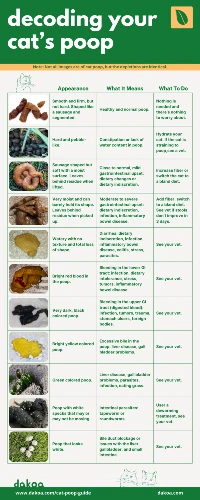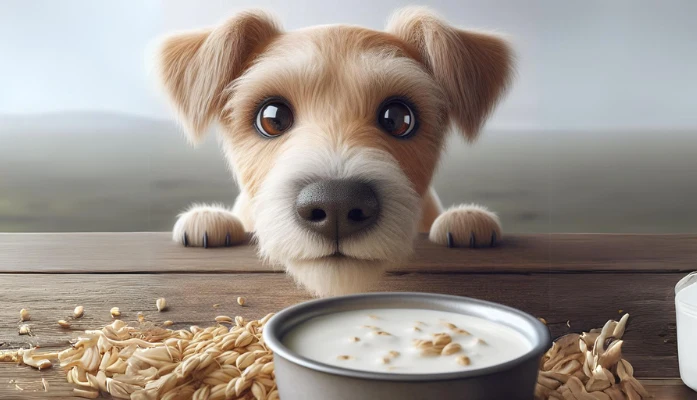Finding white cat poop in your pet’s litter box is a clear sign that something’s not right. This out-of-the-ordinary sight might initially seem harmless but could point to significant health issues. White poop indicates possible trouble in the digestive tract or issues with the liver, such as a critical lack of bile.
For responsible cat owners, recognizing these signs is pivotal in averting more severe health problems. It’s crucial to remember that intestinal parasites, changes in diet, or serious conditions like liver disease or inflammatory bowel disease might be the culprits. Spotting white poop requires a vet visit as soon as possible to rule out any serious causes for the white stool.
Key Takeaways:
- White cat poop suggests important health concerns that could be linked to the liver or digestive system, needing quick attention.
- Observing stool color and consistency helps cat owners identify health issues early, leading to quick and effective treatment.
- Seeing abnormal cat feces calls for an urgent vet check-up to diagnose and start the right treatment plan for your cat’s well-being.

Normal vs. Abnormal Cat Poop
The appearance of a cat’s feces can tell a lot about its health. Ideally, cat poop should be dark brown, indicating a healthy digestive system that’s properly absorbing essential nutrients. It should be firm and occur regularly.
However, changes in the color or consistency of your cat’s stools are a sign of potential health problems, ranging from minor dietary issues to severe conditions like liver disease, digestive upsets, an infection or parasites. Signs of abnormal cat bowel movements can be a change in color, like green, orange, yellow or red or a change in consistency like being soft, watery or slimy.
These signs, especially if paired with changes in activity or decreased appetite, necessitate a quick vet visit. Early detection gives us a leg up in tackling the root causes of our cat’s discomfort.
Understanding the Causes of White Cat Poop
When white cat poop suddenly appears, it’s a signal that all’s not well in your cat’s digestive system. A prime suspect in this color change is a lack of bile entering the small intestine, which could point to liver disease or gallbladder problems, including bile duct obstructions.
Diet also plays a key role; a swift change or food lacking in essential nutrients might shift the stool color spectrum.
Intestinal parasites, like tapeworms, often reveal themselves as white specks in the poop, while foreign bodies—anything from rubber bands to dental floss that are ingested by an inquisitive cat can also lead to this unusual stool color.
Because of this wide array of potential causes, it’s important to consult a vet as soon as possible, particularly if you haven’t made any changes to your cat’s diet or if you notice the white-colored poop wasn’t just a one time occurrence in the litter box.
Through diagnostic tests, a vet can pinpoint the root issue and recommend the best treatment options.
Dietary Influences on Cat's Stool Color
Changing a cat’s diet can drastically affect the color of their stool. Introducing new foods or tweaking their diet may lead to a change in your cat’s stool, highlighting the direct link between what they eat and their digestive health.
For example, white stools can indicate a lack of essential nutrients or can indicate difficulties in digesting certain types of food. This, in turn, might cause a reduction in bile in the stool, a key factor that contributes to the normal color of feces.
For us cat owners, staying alert to changes in the color of our cat’s stool, particularly after dietary changes, is vital. When you notice white stools, this may signal it’s time to reevaluate the nutritional content of our cat’s meals. Consulting with a veterinarian about any diet changes is a smart move to ensure our cats receive a balanced diet that fosters a healthy digestive system and overall well-being.
Health Concerns Linked to White Poop
White cat poop raises immediate concern among pet parents, hinting at possible health issues. Conditions like liver disease can remove the normal dark brown color from a cat’s feces by interfering with bile production.
Gallbladder problems might also prevent the absorption of essential nutrients, leading to pale stools. Intestinal worms, including tapeworms, are often seen as white specks that resemble sesame seeds in the stool, hence the need for routine veterinary examinations.
Noticing unusual symptoms such as weight loss, lack of appetite, or bloody stool alongside white feces is crucial. Tapeworm infections may become apparent through small white worms in the stool or near the cat’s rear, showcasing a range of potential issues that underline the urgency of diagnosis and treatment for the cat’s overall health.
For any digestive tract irregularity, especially persistent loose stools or white stools, you’ll want to get a vet’s input for the most effective treatment options.
Decoding Your Cat's Poop: A Color and Consistency Guide
- Brown, Firm, and Cylindrical: This is the gold standard, indicating a healthy cat absorbing essential nutrients properly. No action is needed unless changes occur because your cat has normal stools.
- Brown Cat Poop: A healthy sign, varying shades of brown are normal; abrupt changes should prompt a vet visit.
- Black Cat Poop, Sticky, Tarry Poop: Signals internal bleeding in the upper gastrointestinal tract. Immediate veterinary consultation is necessary to address potential serious conditions like toxicity or intestinal parasites.
- Green, Mucoid, or Slimy: Often points to gastroenteritis, infections, or liver/gallbladder problems. A change in color like this necessitates a vet check to identify and treat the underlying issue.
- Orange Cat Poop: Orange cat poop is often an indication of a serious health issue, like liver and gallbladder problems caused by a bacterial infection. Abdominal tumors, bile duct obstructions, and abdominal trauma can also cause cat poop that’s orange in color. Contact your vet as soon as possible!
- Red Cat Poop (often Soft, Irregularly Shaped): Red or red streaks in your cat’s poop are concerning because they may indicate bleeding in the lower gastrointestinal tract. This can be caused by a simple change in diet, constipation and straining to defecate, or irritation in the lower intestine due to colitis, infection, or parasites.
- White Spots or Specks: Usually means intestinal parasites, like tapeworms or roundworms. Veterinary deworming treatment is required.
- Yellow Cat Poop or Green, Watery or Lumpy: Suggests liver or gallbladder issues because the cat is passing stool too quickly, but could also be caused by bacterial infections, parasitic infections, or bile duct obstructions. Vet intervention is required to diagnose and treat.
- Hair or Mucus in Stool: Occasional hair is normal, but large amounts of hair or mucus could indicate health problems and will require a vet check.
- Daily Poop Frequency: Healthy cats typically poop once a day.
- White, Crumbly, or Chalky: Uncommon and serious, indicating possible bile or fat absorption problems, often associated with a raw diet. Immediate vet attention is needed.
- Gray, Greasy, or Oily: Can be indicative of pancreatic problems. This unusual appearance calls for a vet’s diagnosis and treatment plan.
- Consistency Variations: From hard and dry indicating constipation, to watery pointing to diarrhea. Changes in consistency can signal a range of dietary or health issues, from dehydration to food sensitivities or infections.
- Watery Diarrhea: Indicates digestive upset, potentially from dietary changes, stress, or infections. Persistent or accompanied by symptoms of illness needs a vet visit.
- Mushy Stool: Suggests stomach distress, possibly due to diet changes or other causes. Persistent issues or additional symptoms warrant a vet consult.
- Pebble-like Constipation: Often results from dehydration or low fiber. The best way to know for sure is to have your cat evaluated by a vet for appropriate treatment.
- Mucus/Jelly-Like Stool: Indicates serious intestinal inflammation, possibly from parasites or illness, and may include blood. Such conditions, especially with jelly-like stool, require immediate veterinary attention for emergency care.
- Activity-related Changes: A sudden drop in activity might lead to constipation or smaller, less frequent stools. Monitoring your cat’s activity and stool frequency is helpful.
Remember, any abrupt or drastic changes in your cat’s stool—be it color, consistency, shape, or smell—should prompt a vet visit. Descriptions of what each appearance might mean are based on insights from Purina, Emergency Vets USA, Bond Vet, and Hepper, which emphasize the importance of monitoring your cat’s litter box as a window into their health. Always consult with a vet for a precise diagnosis and treatment plan tailored to your cat’s specific needs.
More To Discover
- A Tale of Two Pet Cultures: Contrasting Pet Ownership in Germany and the United States
- A Helpful Guide For Keeping Your Cats Ears Clean And Healthy
- Everything You Need To Enjoy a Stress-Free Road Trip with Your Cat [Packing List Included]
- Tasty Homemade Treats You and Your Dog Can Share Without Any Guilt (Recipes Included)
Frequently Asked Questions
- Why is my cat’s poop white?
White or pale stools can indicate a bile duct blockage or issues with the liver, gallbladder, and small intestine. Consult a vet if you notice these symptoms. - What do white specks in cat poop mean?
White specks often suggest the presence of intestinal parasites, like tapeworms. A vet visit is necessary for proper diagnosis and treatment. - Can changes in my cat’s diet affect stool color?
Yes, sudden dietary changes can lead to variations in stool color, including white, yellow, or green feces, reflecting digestive disturbances. - What should I do if my cat’s stool is loose or watery?
Diarrhea can stem from dietary changes, stress, or health issues. Contact your vet for recommendations for treating at home or if the cat should be seen. - How often should a healthy cat poop?
Healthy cats typically poop once a day, but frequency can vary with age and diet. - Is it normal for a cat’s poop to contain hair?
Small amounts are normal due to grooming, but excessive hair may indicate over grooming or digestive issues. - What does mucus in my cat’s poop indicate?
Mucus or a jelly-like appearance suggests intestinal inflammation, possibly from parasites or illness, a vet visit is recommended.
Quick Closing
Scooping the litter box isn’t just a chore; it’s a window into your cat’s health. Healthy cat poop is typically brown, solid, and proportional to their diet. While occasional oddities might not spell trouble, persistent changes or signs of illness shouldn’t be ignored. Monitoring your cat’s stool is proactive healthcare, offering early clues to potential issues. If abnormalities persist or are accompanied by other symptoms, consulting a vet becomes essential. This attentive approach can ensure your feline friend remains healthy and happy.
























